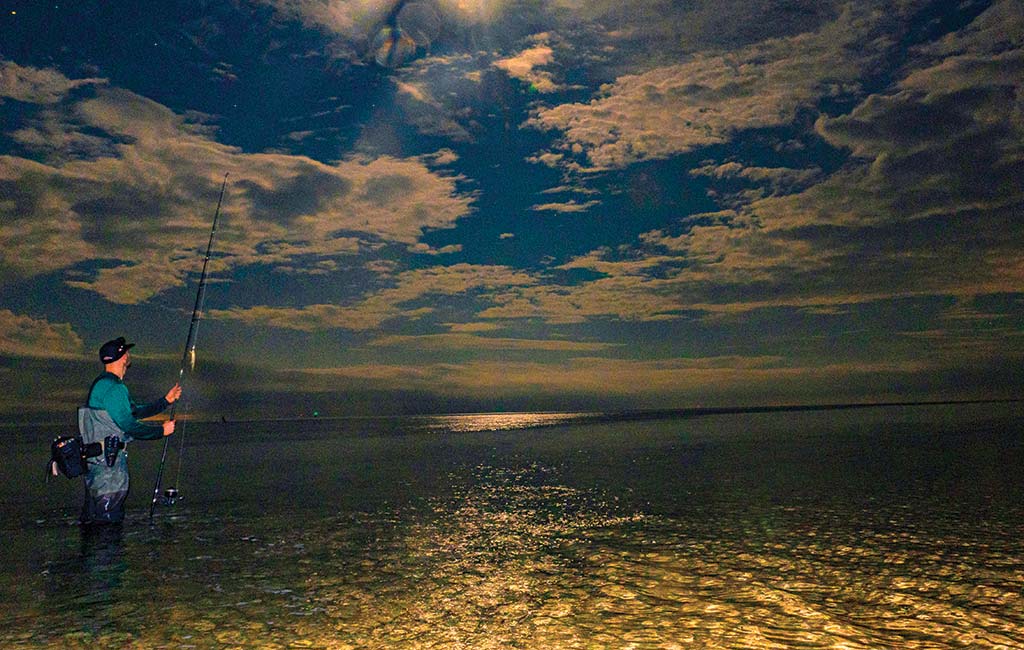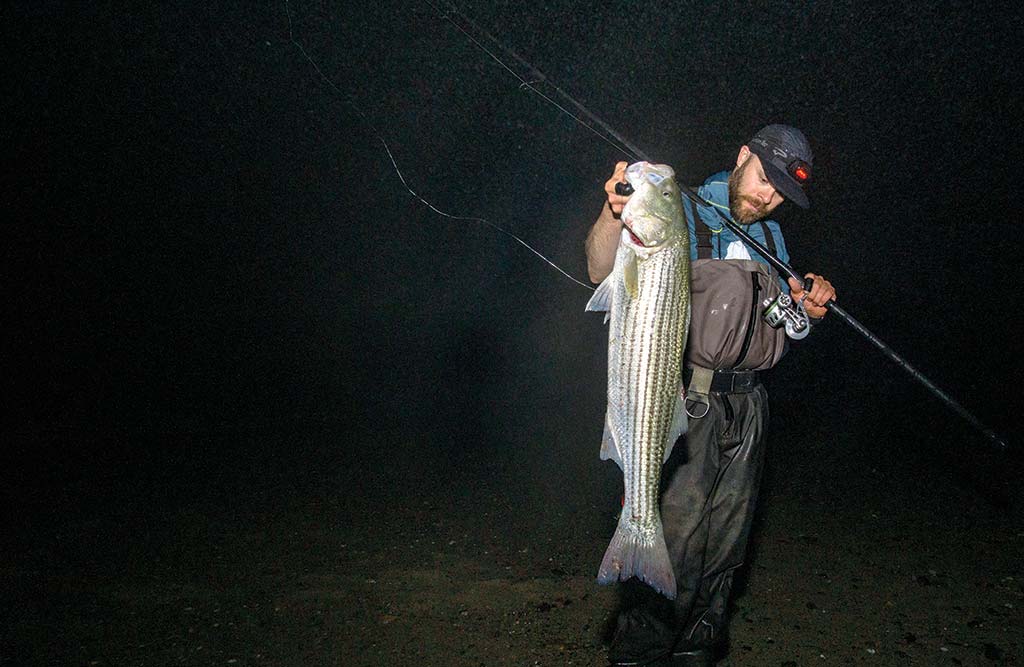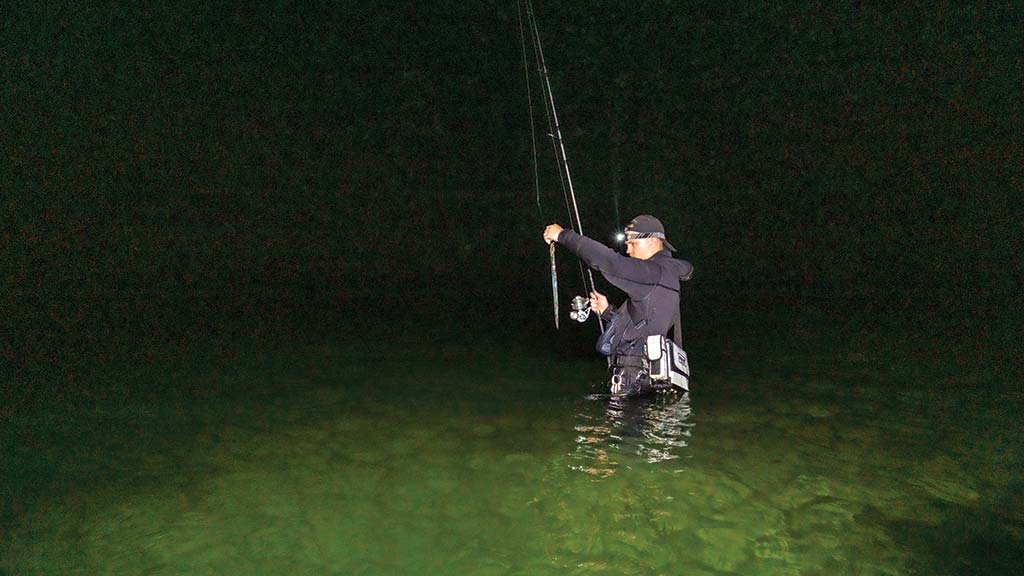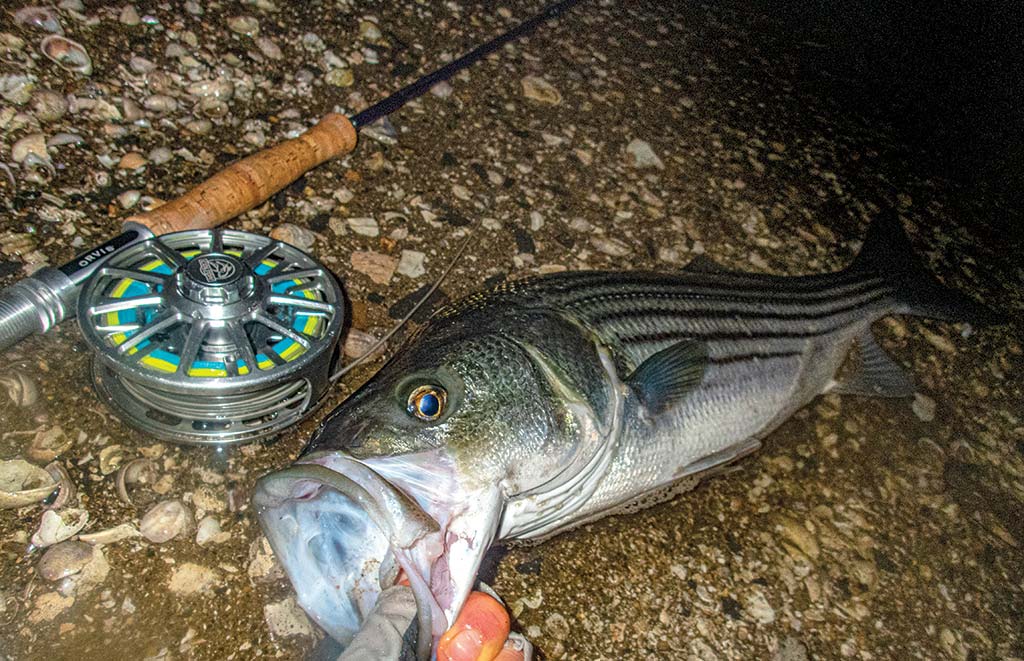
Learning as many techniques and environments as possible will ultimately make you a better angler,
Surf fishing is a pastime pursued with passion, and comprised of a whole slew of elements that are both tangible and intangible. I hear or read the phrase “it’s more than just catching fish” parroted in surfcasting circles nearly every day and I feel strongly myself that surf fishing is an art and science undertaken by not just the mind, but the heart and soul. To this point, there are some places and techniques in the surf that I enjoy more than others – some others I genuinely dislike. However, even I, as a hopeless surf fishing romantic, acknowledge that ultimately, catching fish is the goal and in most situations, the more fish and larger they are, the better. This requires constantly learning new things, and pushing myself to improve as an angler, including sometimes sacrificing and fishing in places and ways I don’t particularly enjoy.
This may sound a bit crazy – fishing in places or with techniques you don’t particularly care for, but I have repeatedly done this in my fishing career in order to constantly improve and catch more fish. Learning as many techniques and environments as possible will ultimately make you a better angler, and I can personally attest to this. Here are just three ways that I have done this in the past.

Target New Environments
Let me soften what I just said a little, and state that I am not suggesting you should force yourself to do something that isn’t fun. However, if you can push yourself to learn a new type of structure or technique, even if it’s a slightly bitter pill to swallow, I guarantee you’ll find use for the new skills down the road. Being prepared and unsurprised by any situation is really one of the top goals of any surfcaster, and exploring new types of environments is a great way to do this. So, for example, if you have a passion for sand beaches, but are curious about fishing a river, I suggest you go for it; but if the thought of getting in a wetsuit makes you sick, then it’s ridiculous to suggest you should try.
You don’t have to commit to multiple seasons and whole tides of new environments or techniques, either. Are you a die-hard jetty rat, but drive by a tidal creek on the way to your favorite rocks? Why not stop and fish it for 30-minutes on the way out, or the way home, or both? This small amount of time, over even just one season, can be highly rewarding. Or, another method I like to use is the “all other times” technique, as I call it. I’ll pick a new spot, and every time I don’t have a great tide or conditions at my favorite spots, I’ll simply go to the new one. One season I chose a spot with substantial depth and rocky structure, because I had very little experience with deep water. Every night of the season that my primary spots (my regular rotation of about eight) didn’t have the right conditions, I’d simply always go to this new, deep, spot, regardless of tide, weather, moon, or bait. I learned a lot that way, while still feeling like I was catching enough fish at my regular spots to make the “risk” of fishing the new spot worth it.
There is also the “all in” method, which takes more discipline. For example, for years I thought I had absolutely no interest in fishing a bucktail in an inlet. However, repeatedly in other surf situations I felt I was unprepared for strong currents. Therefore, I decided I would try to learn the basics of fishing inlets, so that I could translate this to surf rips. Knowing I wouldn’t want to do it forever, I decided to dig in and spend a big chunk of a single fall hammering one inlet. I even gave up some prime nights at other spots, because I was all in, hoping this would be a one-and-done experiment. And it worked: this time taught me an incredible amount about a variety of things, and I caught a good number of fish. While there were too many lessons to list here, one simple one I wasn’t expecting was how important nuance and really small details can matter. On some nights a quarter-ounce, half-inch of trailer, or different color of trailer (red vs. white), was the difference between getting no hits, and bailing fish every cast. These tiny differences were a shock to me at the time, and I still think about it regularly when I am on a fussy bite on a sand beach, or out in a boulder field.
Therefore, I suggest picking a new type of surf environment, and giving it a go; not just to give yourself more fishing options, but to see what new ideas or skills you can translate to your tried-and-true favorites. You might even end up really enjoying it.

New Takes On Old Plugs
Knowing the ins and outs of every single plug in your bag is advice I give all new surfcasters. However, taking it one step further, I suggest picking just a couple plugs, and fishing them to death. That is, attempt to use them the majority of each night, as many nights of the season as possible, regardless of conditions. This forces an angler to understand the limitations of the plug, and the importance of presentation and profile. It also decreases the number of plugs one has to carry – an added bonus. Learning to use a single plug in as many ways as possible and pushing it to its limits, helps prevent an angler from ever being surprised, or unprepared for a set of conditions or fish behavior.
I believe this is so important, that I often will take off a plug once I get into fish, and try fishing something else. Can I continue to catch? If not, I work hard to determine what the difference is, and then modify my delivery and stick with the new plug, rather than immediately switch back. For example, I might try retrieving faster or slower, adding twitches, jerks or pauses, or even modifying the plug on the fly. Experimenting like this is really only possible if you are into a good bite of fish, because you need to be confident the fish are still there and still willing to hit. However, for example, the next time you’re into a bite on a swimmer, I suggest stopping and trying to fish something else for more than a few casts: and seriously, not half-heartedly. While it may hurt in the short term, you will likely learn something that could save a session in the future. It isn’t about the short term challenge, but instead the long term pay off.
Let’s use the legendary Super Strike Zig-Zag darter as a very specific example. The plug has notoriety for catching giant stripers day-in and day-out. However, many anglers see it as a plug with many limitations. This could not be further from the truth. This plug simply catches fish everywhere, as long as you know how to use it. The question then quickly becomes, what are darters strengths and limitations, and how comfortable are you with them all? Case in point, I personally have been pushing myself to be use the Zig-Zag more often on sand beaches. While I have had tremendous success in the past with sweep, in 2021 I have worked hard to get it to work more effectively without lateral water movement. It’s an ongoing process, but the experiment has yielded nearly a 100 fish as of writing this, with one in excess of 45 inches. I’d call that successful! However, the larger point is that I probably could have used a needle, a glider, or even a metal lip in many of these situations, however I would not have this new skill with the darter to apply elsewhere.

Lure, Bait, Or Fly
The majority of anglers that religiously chunk bait rarely toss a plug, fly fishermen are notorious for looking down on lures as inferior, and plug fisherman tend to be equally critical of bait, and also sometimes view the fly rod as an excuse to catch small fish. There are some anglers that dabble in two or all of these techniques, but for the most part, it appears to me that anglers tend to get in a “lane” and stay there. This is such a shame, as one of the very best ways to become a better angler at your favorite discipline, is to try out one of these other techniques. It can also be a lot of fun!
For example, I have a disdain for fishing with eels. This article is far too short for me to explain why, but you will never find me slinging another “snake” for the rest of my life. However, there was a very short period of time where I decided I was going to seriously fish eels as a way of learning my spots. While my results were not very spectacular, I had one remarkably eye-opening night in one spot in particular. While I had caught hundreds of fish from this single spot, I always assumed it would never produce a fish over 25-pounds. However, the season I fished rigged eels there, I landed a fish in the high 30s. It was an eye-opening event, and radically altered how I attacked this spot, which ultimately led to additional 30-pound fish on plugs, a feat I would have thought impossible had I not forced myself to try eels.
Fly fishing has been even more impactful on my overall success in the surf. Being limited to a very short cast, having diminished fish-fighting ability, but being able to neutrally swing a fly that looks hyper-realistic, has shown me things I didn’t even know I was missing. While there are spots I cannot effectively use the fly rod, I try to replicate some of the techniques I’ve learned from the fly rod with a plug. For example, I now use a lot more plugs that sink very slowly or suspend, which has yielded me at least a few more fish over 30 pounds. Further, I worry far less about casting distance at one of my spots, now that I’ve landed a couple nice fish on the fly there. Clearly, the fish come in close so there is no wasting valuable time heaving a needle to the horizon.
I am not suggesting you totally switch techniques and force yourself away from those you love. Rather, dabbling in other techniques or environments, such as the ones detailed here, can open your mind to opportunities you may have been missing, and ultimately help you put more fish on the beach.




